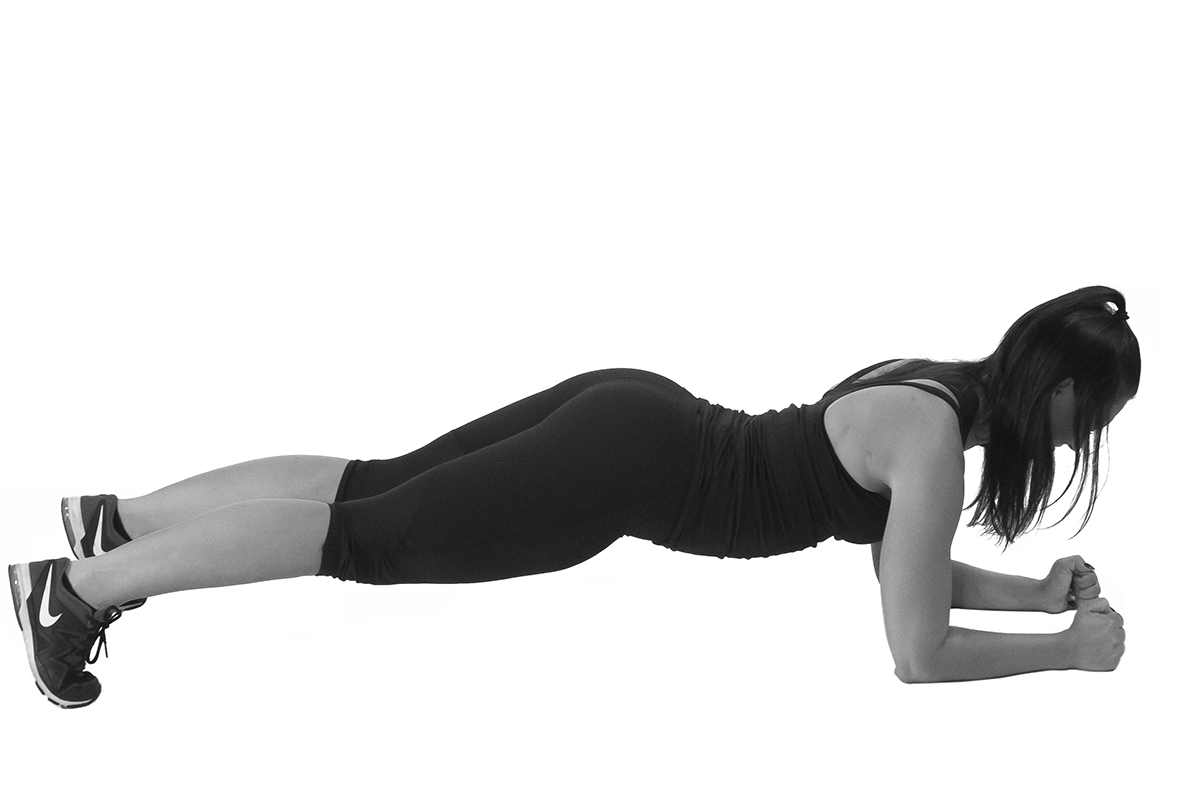
Plank
- Assume a plank position, resting on your elbows, with the balls of your feet about shoulder width apart. Your elbows should be directly underneath your shoulders, your back should be flat, and your neck should form a straight line with your back. Tighten your rear end and abdominals and the front of the thighs.
- Hold this position for the suggested amount of time. Do not allow your lower back to sag.
What it does: Strengthens the entire core.
Form tip: To intensify this exercise, narrow your base of support by moving your feet closer together. This is how long you’ll need to hold a plank to flatten your belly.
For a more extensive list of exercises like this, get my new book, 60 Second Sweat.
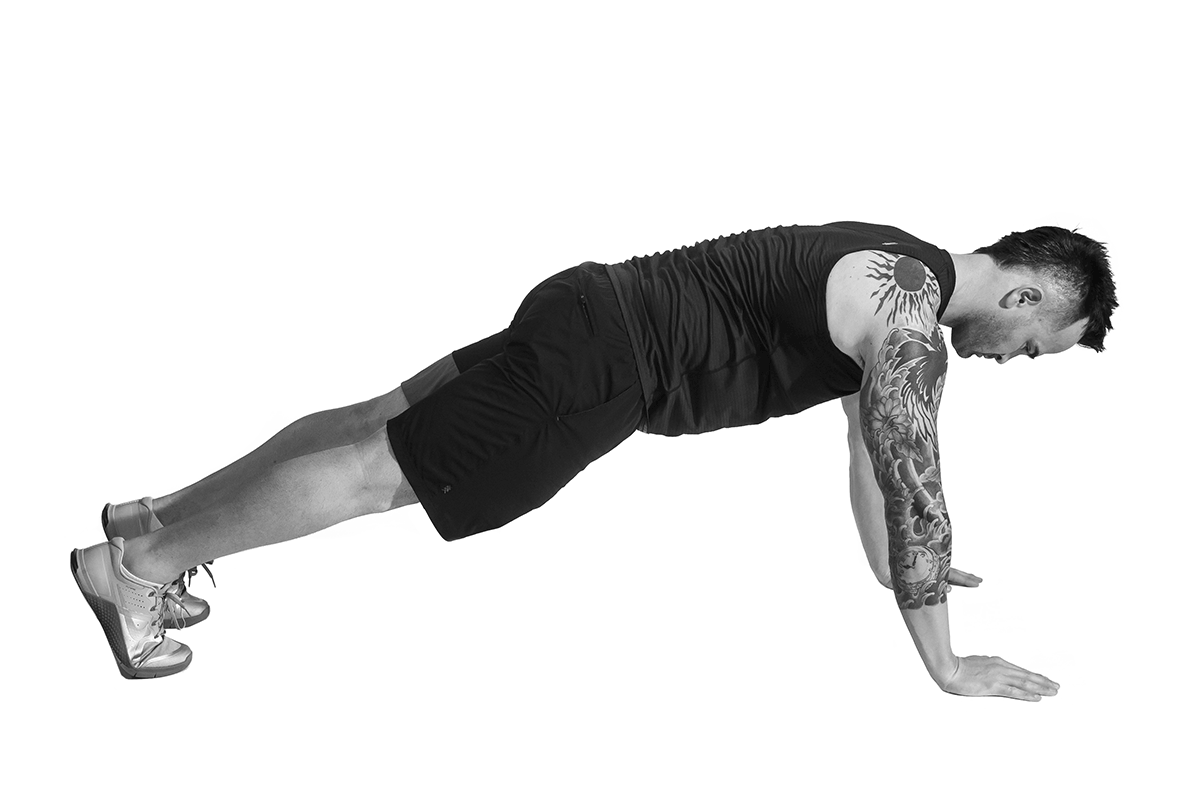
Plank walk-up
- Assume a plank position, resting on your elbows, with the balls of your feet about shoulder width apart. Your elbows should be directly underneath your shoulders, your back should be flat, and your neck should form a straight line with your back. Tighten your rear end, abdominals, and the front of the thighs.
- Plant your right hand on the ground and push up, then do the same with your left hand, to walk up and onto your hands.
- Reverse the movement going back down, moving onto one elbow at a time. Repeat for the suggested number of reps, not allowing your lower back to sag.
What it does: Strengthens the entire core and increases shoulder strength and stability.
Form tip: To intensify this exercise, bring your feet together and narrow your base of support. Then, try these other plank exercises to transform your abs.
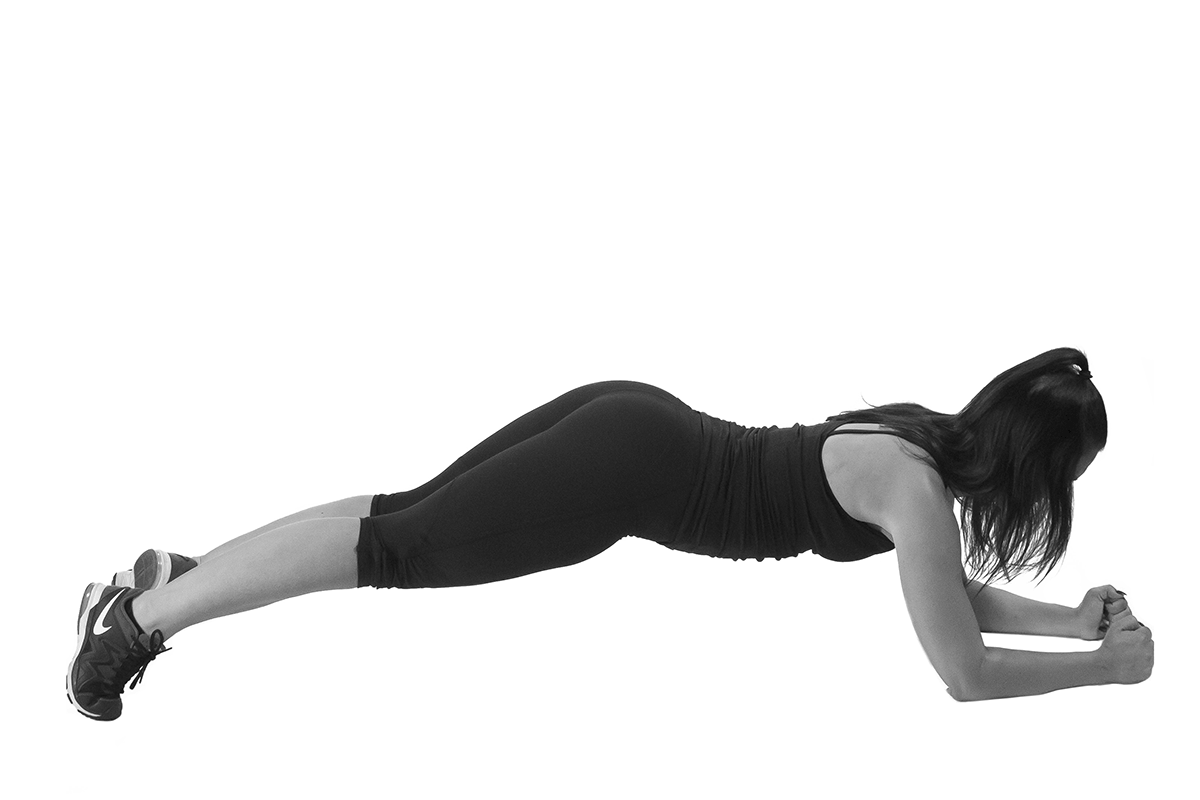
Long lever plank
- Assume a plank position, resting on your elbows, with the balls of your feet about shoulder width apart. Your elbows should be a few inches in front of your shoulders, forming a longer lever than in a standard plank. Your back should be flat, and your neck should form a straight line with your back. Tighten your rear end, abdominals, and the front of the thighs.
- Hold this position for the suggested amount of time, not allowing your lower back to sag.
What it does: Strengthens the entire core.
Form tip: To intensify this exercise, bring your feet together and narrow your base of support. Plus, here are 7 more plank upgrades that’ll reshape your workout.
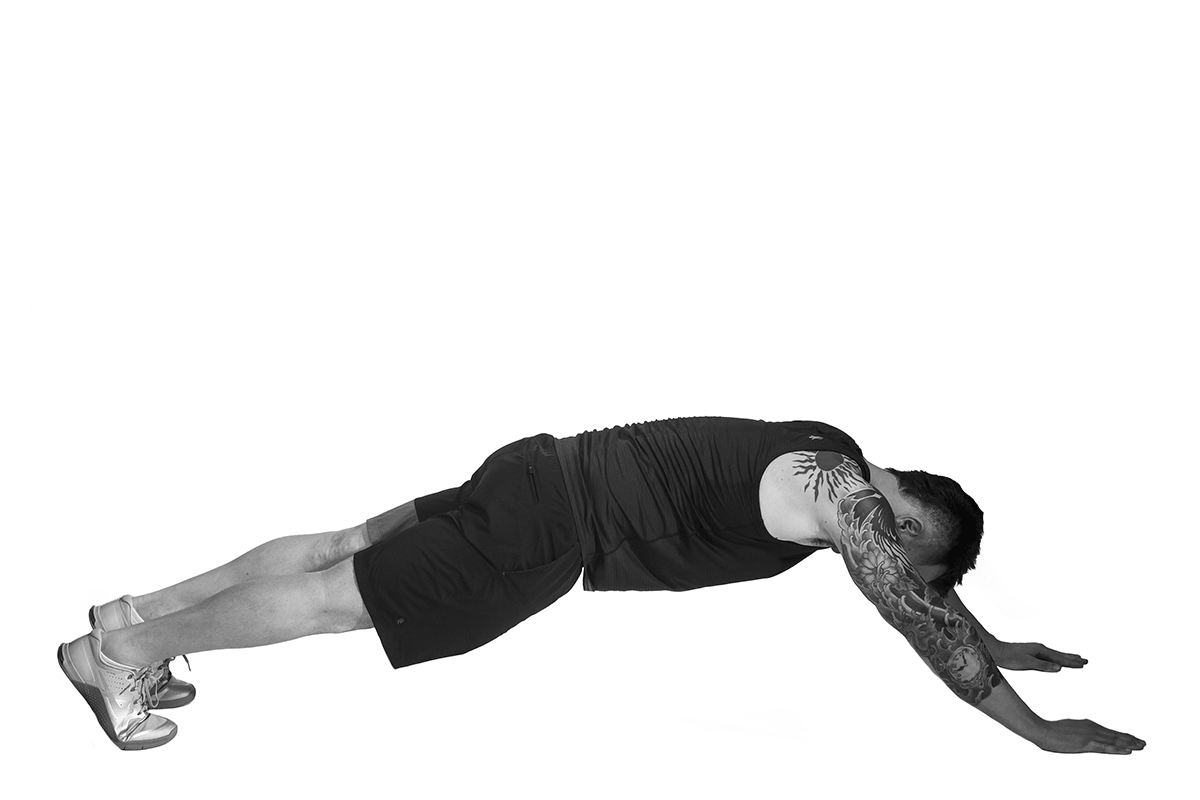
Inch worm
- Stand with your feet together. Bend at your waist and touch your toes. Keep your knees as straight as possible, but if you need to bend them to reach your toes, go ahead and do so.
- Slowly walk your hands away from your feet, inching your way forward until your body is parallel, or near parallel, to the floor and your hands are about a foot in front of your shoulders. Pause for a full second in this position.
- Keeping your abdominals and rear end tight and your back flat, walk your way slowly back into the starting position and repeat for the suggested number of reps.
What it does: Strengthens your entire core, increases shoulder stability, and stretches and lengthens the back of your thighs.
Form tip: Do not move through this movement too fast. Take your time walking in and out, and focus on tightening up your core. If you’re looking to improve your shoulder strength, try these shoulder exercises you can do at home.
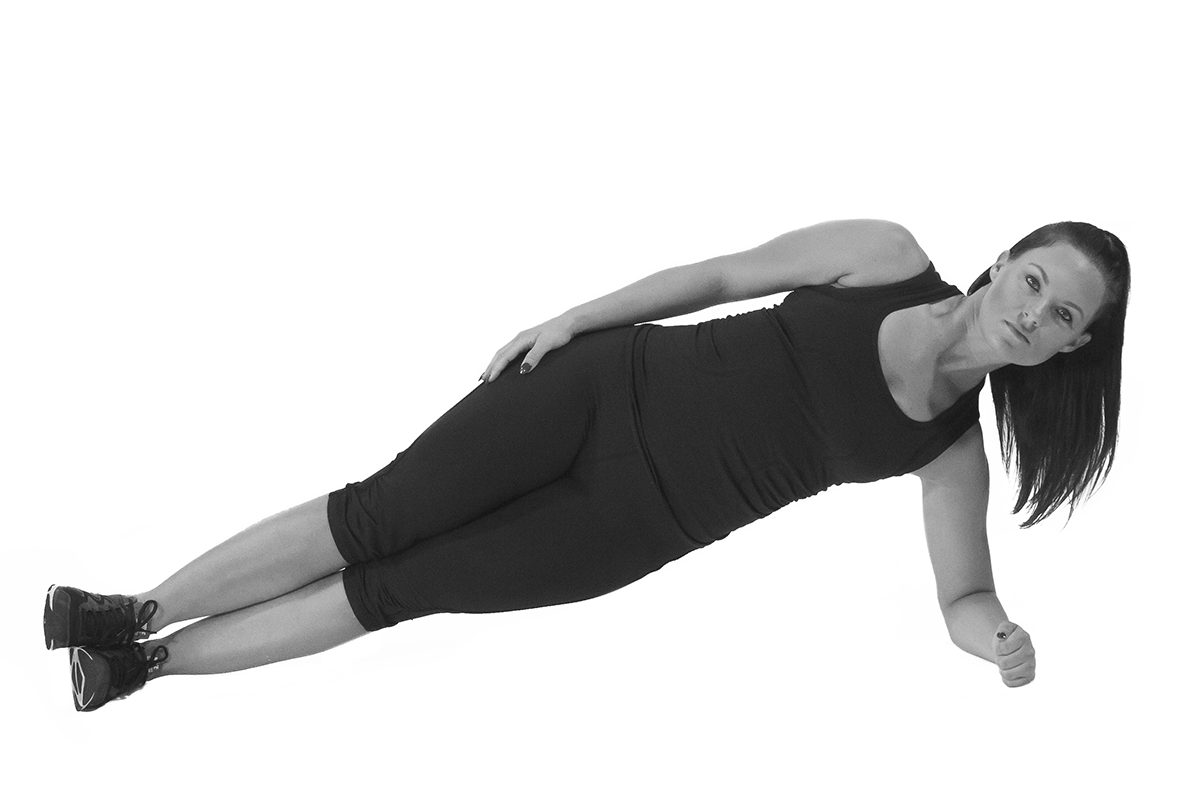
Side plank
- Lie on your left side with your left elbow propped up directly underneath your shoulder. Your legs should be straight and stacked on top of each other.
- Tightening your abs and the front of your thighs, lift your hips up and into the air. Your body should form a straight line.
- Hold this position, not allowing your hips to sag, for the suggested amount of time before switching sides.
What it does: Strengthens the entire core with an emphasis on the side abdominals.
Form tip: Make sure your top shoulder does not rotate forward, as this makes the exercise less effective for your side abdominals.
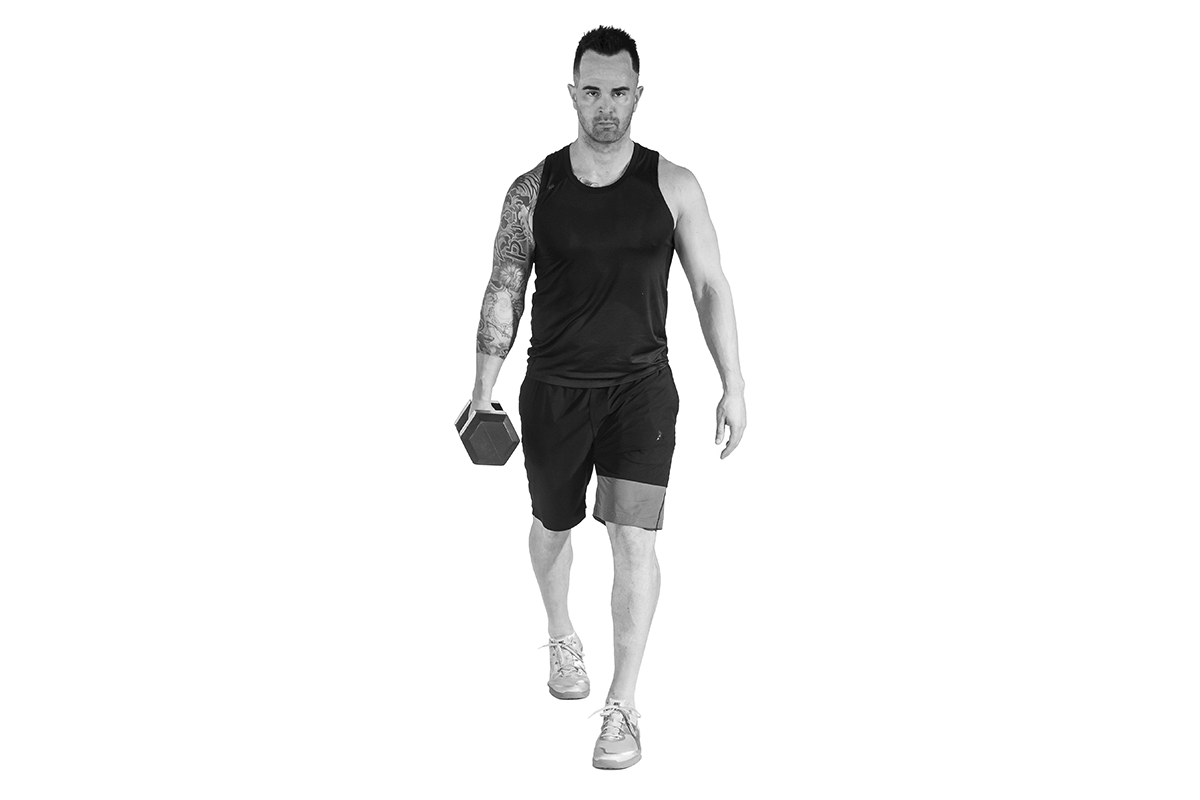
Single-arm dumbbell carry
- Stand, holding a dumbbell in your right hand, with your right arm hanging down by your body.
- Keeping your right shoulder blade pulled back and the dumbbell a few inches off the side of your thigh, walk for the suggested number of steps before switching hands.
What it does: Strengthens the entire core, with an emphasis on the side abdominals and the gripping muscles in your hands.
Form tip: Do not allow the dumbbell to pull you to the side.
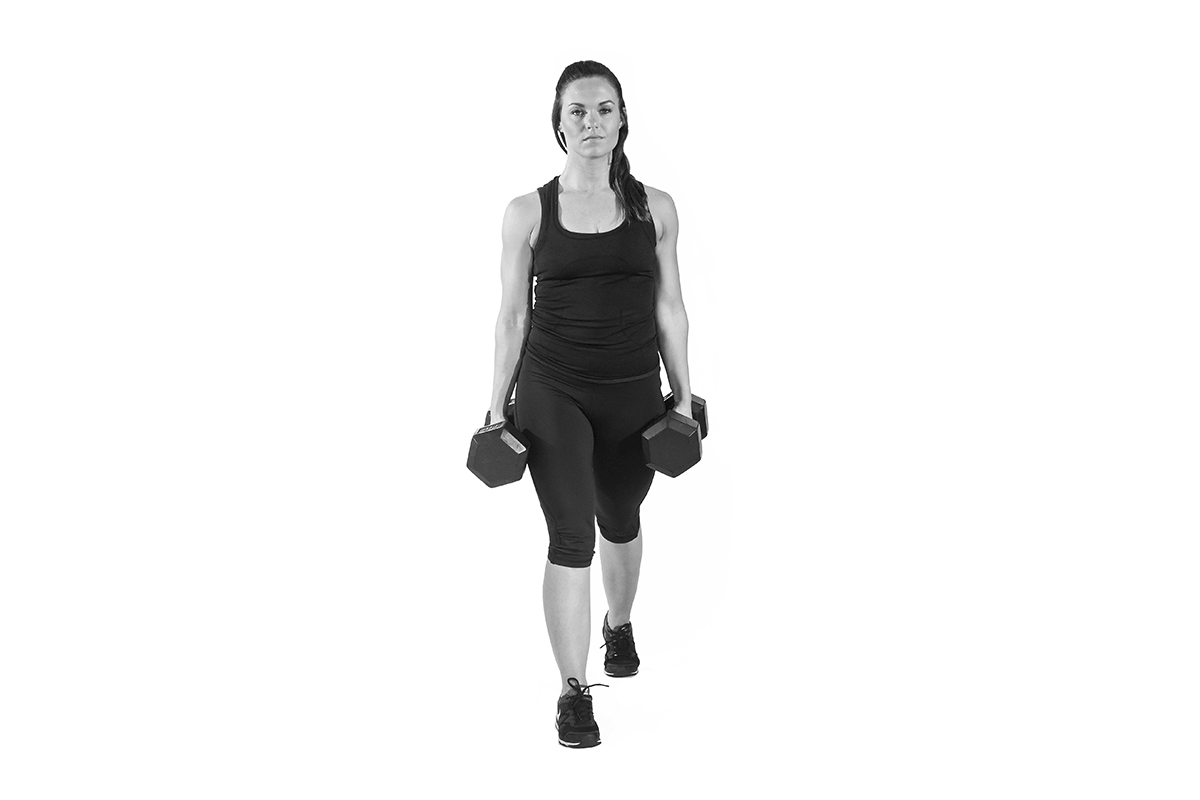
Double-arm dumbbell carry
- Stand, holding a dumbbell in each hand, with your arms hanging down by your sides and your palms facing in.
- Keeping your shoulders pulled back, walk at a steady pace for the suggested number of steps.
What it does: Strengthens the entire core, upper back, and gripping muscles in your hands.
Form tip: To enhance the effectiveness of the exercise and the involvement of your upper back muscles, walk tall and don’t allow your shoulders to hunch or round forward.
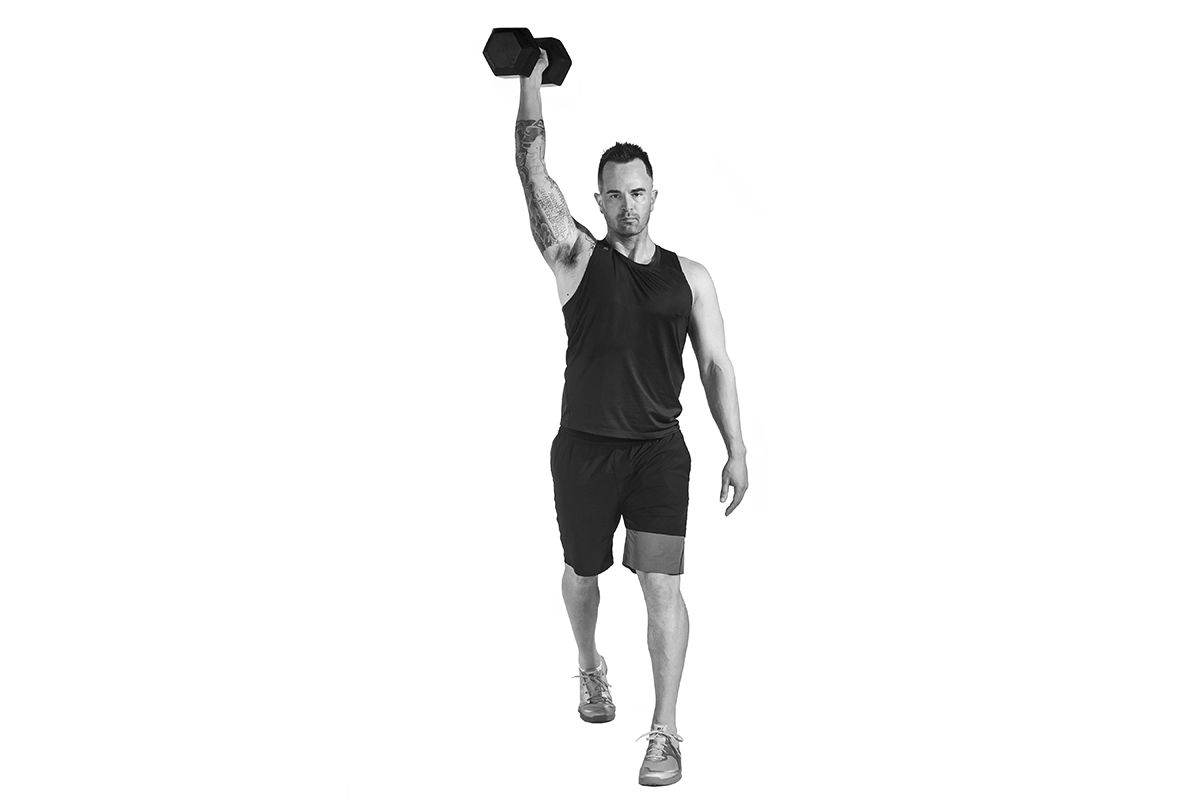
Overhead dumbbell carry
- Stand, holding a dumbbell in your right hand over your head, with the palm facing in toward your body. Your right shoulder should be packed down into its socket.
- Keeping your right wrist straight and tightening your abdominals, walk at a steady pace for the suggested number of steps before switching arms.
What it does: Strengthens the entire core, with an emphasis on the side abdominals, and builds shoulder stability.
Form tip: To avoid potential injury to the shoulder, start with a very conservative weight—20 to 30 pounds for most people—until you get the feel of the exercise. Check out these 14 other dumbbell exercises for upper body strength.
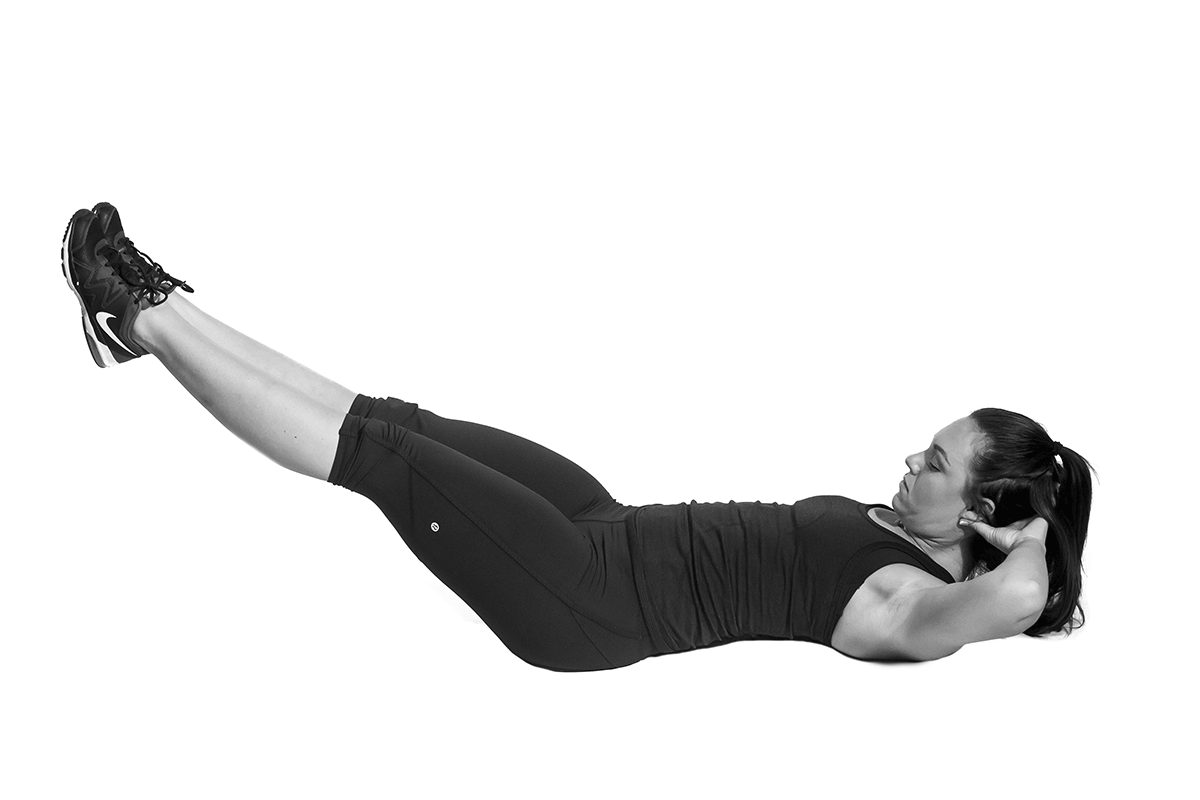
Hollow body hold
- Lie flat on your back with your knees bent. Place your fingertips behind your ears with your elbows out.
- Straighten your legs and raise them about a foot off the ground, keeping your lower back pressed into the floor.
- Slowly raise your head and shoulders off the floor.
- Hold this position for the suggested amount of time.
What it does: Strengthens the entire core.
Form tip: If the exercise is too difficult, place your hands across your chest as you crunch up and hold.
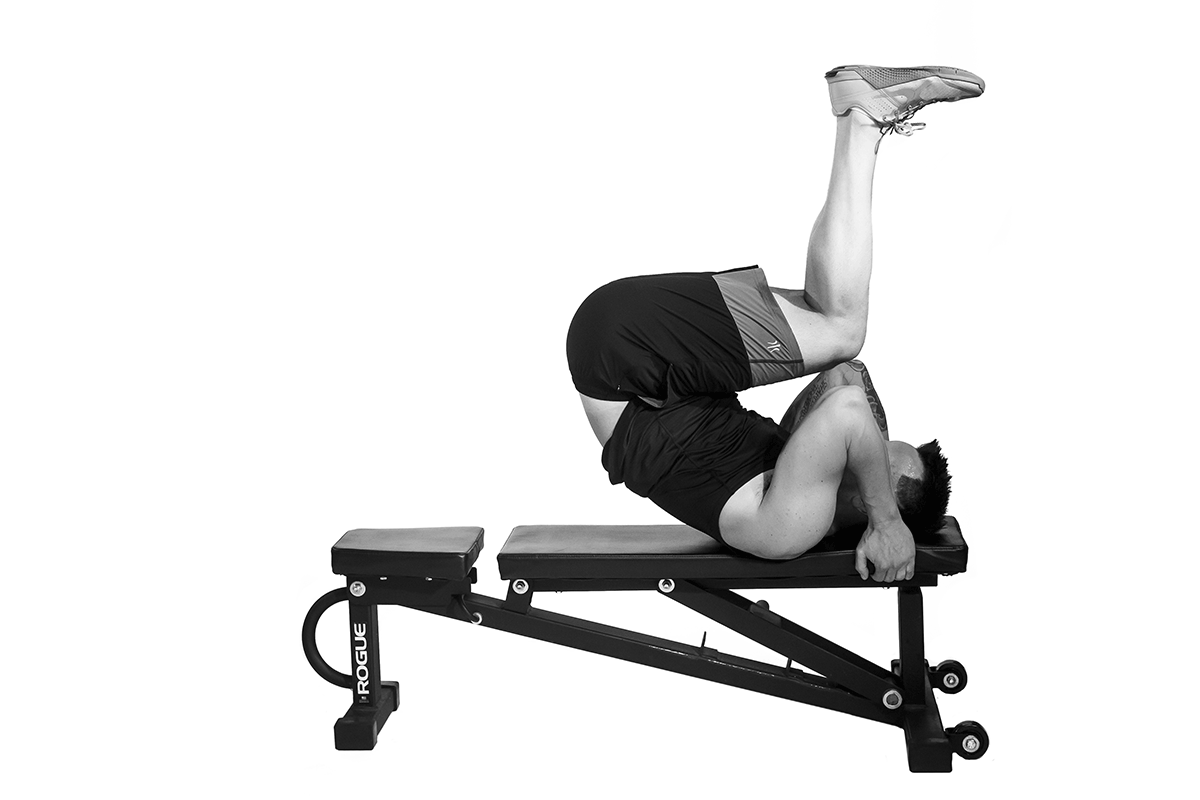
Reverse crunch
- Lie flat on your back on a flat bench with your hands gripping the bench by your ears and your legs bent to a 90-degree angle at the knee. Bring your knees over your waist.
- Using your lower abdomen, roll your hips back toward your rib cage until your lower back rolls off the bench a few inches and your knees come over your chest. You should not feel pressure in your neck; if you do, you’ve rolled too far back.
- Reverse the motion, rolling back to the starting position where your lower back is flat against the bench. Repeat for the suggested number of reps.
What it does: Strengthens the lower abdominals.
Form tip:To avoid lower-back discomfort, do not allow your feet to come all the way back down to the bench during the lowering phase of the exercise. (Not a fan of crunches? Here’s how to tone your abs without doing a single one.)
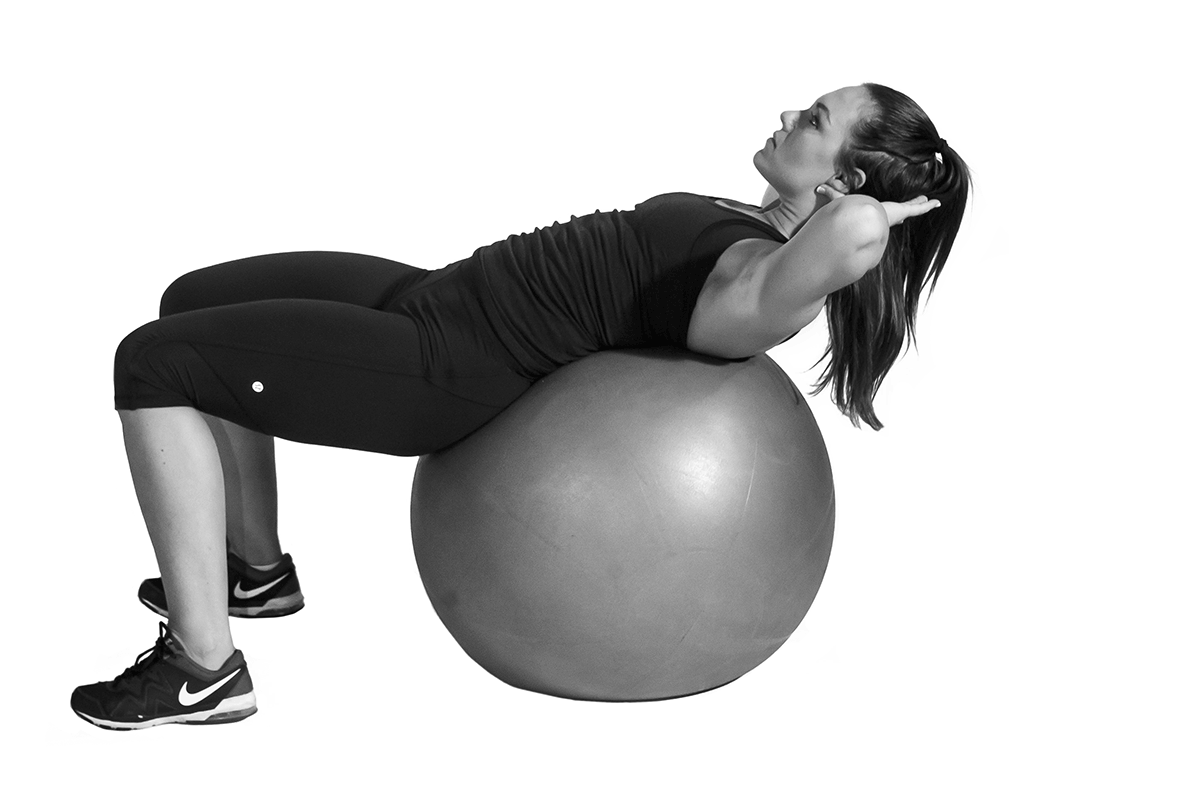
Stability ball crunch
- Lie with your lower back on top of a stability ball and your feet flat on the floor. Place your hands behind your head, your fingertips behind your ears, and your elbows out to the side.
- Lean back over the ball until you feel a stretch in your abdominals.
- Lift your chest, head, and back until you feel a strong contraction in your abdominals.
Repeat for the suggested number of reps.
What it does: Strengthens the front and lower abdominals.
Form tip: Don’t extend so far that you fall off the back of the ball. If the exercise is too difficult, place your hands across your chest instead.
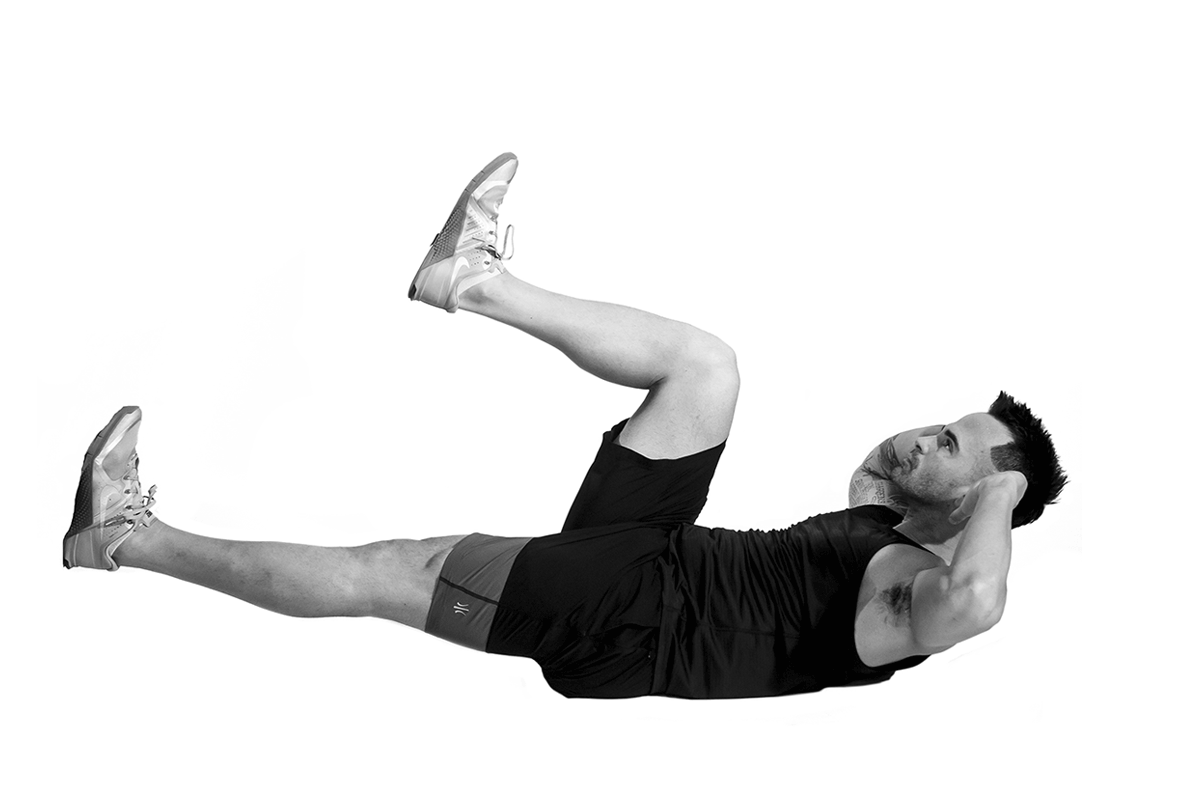
1 back/1 out crunch
- Lie flat on your back on the floor, with your hands behind your head, your fingertips behind your ears, and your elbows out to the side. Your right leg should be straight on the floor. Bend your left knee and lift it over your left hip. Raise your right leg straight up off the floor a few inches.
- Lift your chest, head, and back a few inches off the floor until you feel a strong contraction in your abdominals. Repeat for the suggested number of reps before switching sides.
What it does: Strengthens the front and lower abdominals.
Form tip: If the exercise is too difficult, place your hands across your chest as you crunch up. Check out these 9 chair exercises that work your whole body.
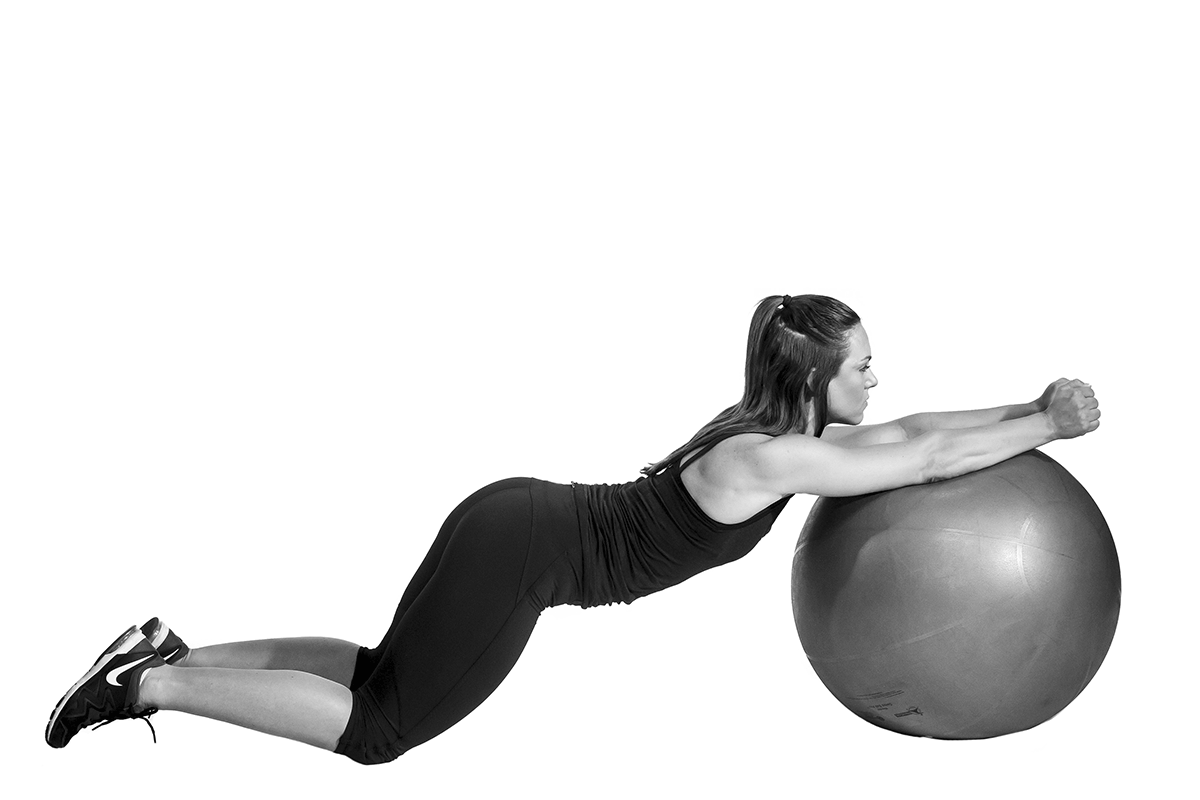
Stability ball rollout
- Kneeling in front of a stability ball, extend your arms and place your hands on the front of the ball near the top.
- Keeping your back flat, tighten your abdominals and rear end and slowly roll the ball forward, allowing your forearms to go on the top of the ball. Roll out until a straight line is formed between the hips and the shoulders.
- Pause for a full second in this position. Roll the ball back in and repeat for the suggested number of reps.
What it does:: Strengthens the entire core.
Form tip: Do not allow your hips to sag. If you feel discomfort in your lower back, do not roll out as far.
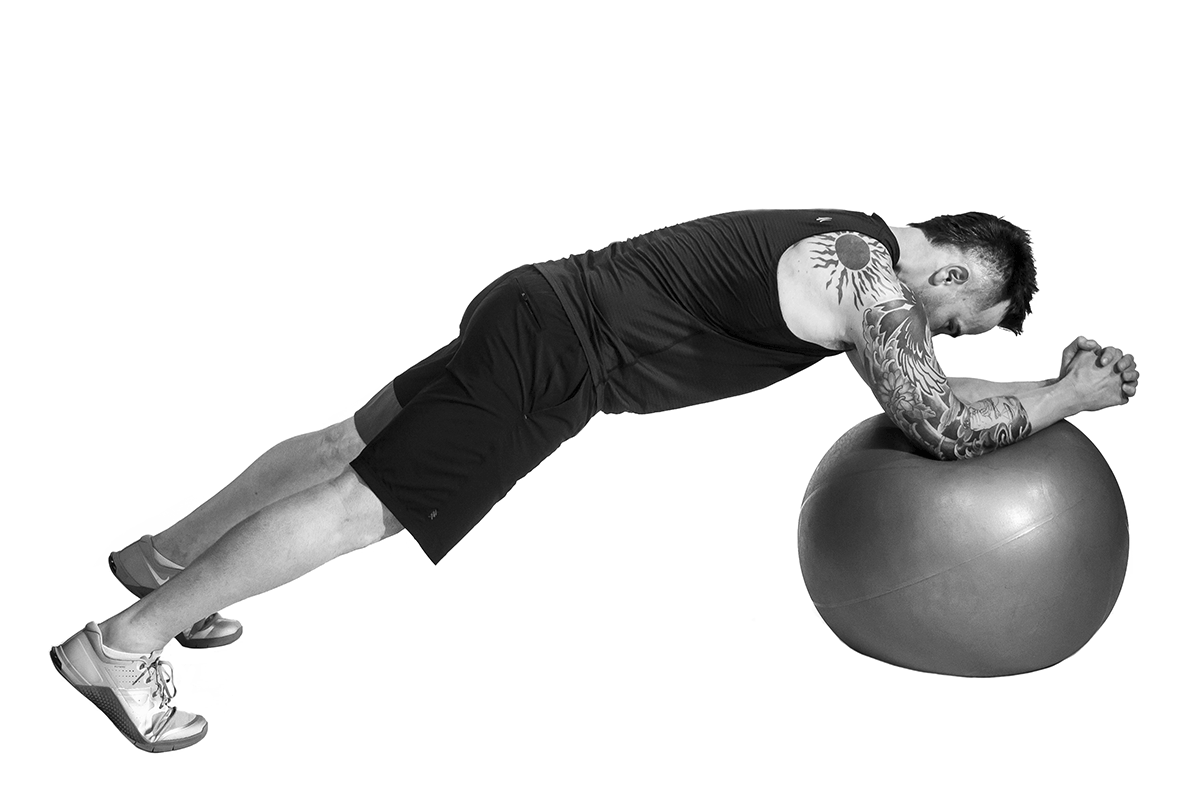
Stability ball saw
- Assume a plank position with your elbows and forearms on an exercise ball and your feet on the floor about hip width apart.
- Keeping your back flat and your abdominals tight, slowly “saw” your elbows out just a few inches, not allowing your hips or lower back to sag.
- Saw the elbows back in to the starting position and repeat, sawing in and out, for the suggested number of reps.
What it does: Strengthens the entire core.
Form tip: Do not saw too far out; stop as soon as you feel any discomfort in your lower back.
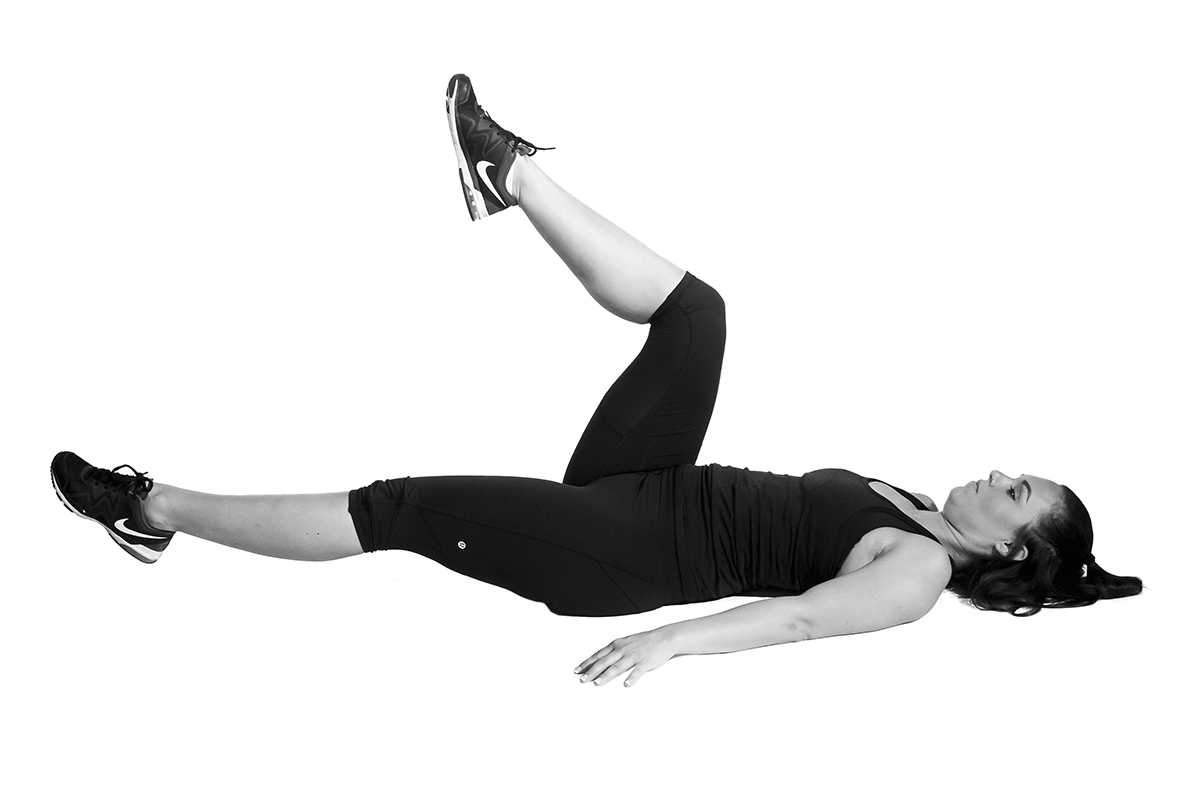
Dying bug
- Lie flat on your back on the floor with both your knees over your waist and bent to a 90-degree angle. Your arms should be along the sides of the body, flat on the floor, with the palms down.
- Keeping your lower back pressed down into the floor, slowly extend your left leg forward and down until your knee is straight.
- Pause for a full second in this position. Bend the left knee and bring the left leg back to the starting position.
- Switch legs. Alternate, extending your left leg and then your right leg, for the suggested number of reps on each side.
What it does: Strengthens the entire core.
Form tip: Prior to each rep, breathe deeply, filling your belly with air by expanding the abdominals outward. Just make sure you’re not making the biggest mistake women make with ab exercises.
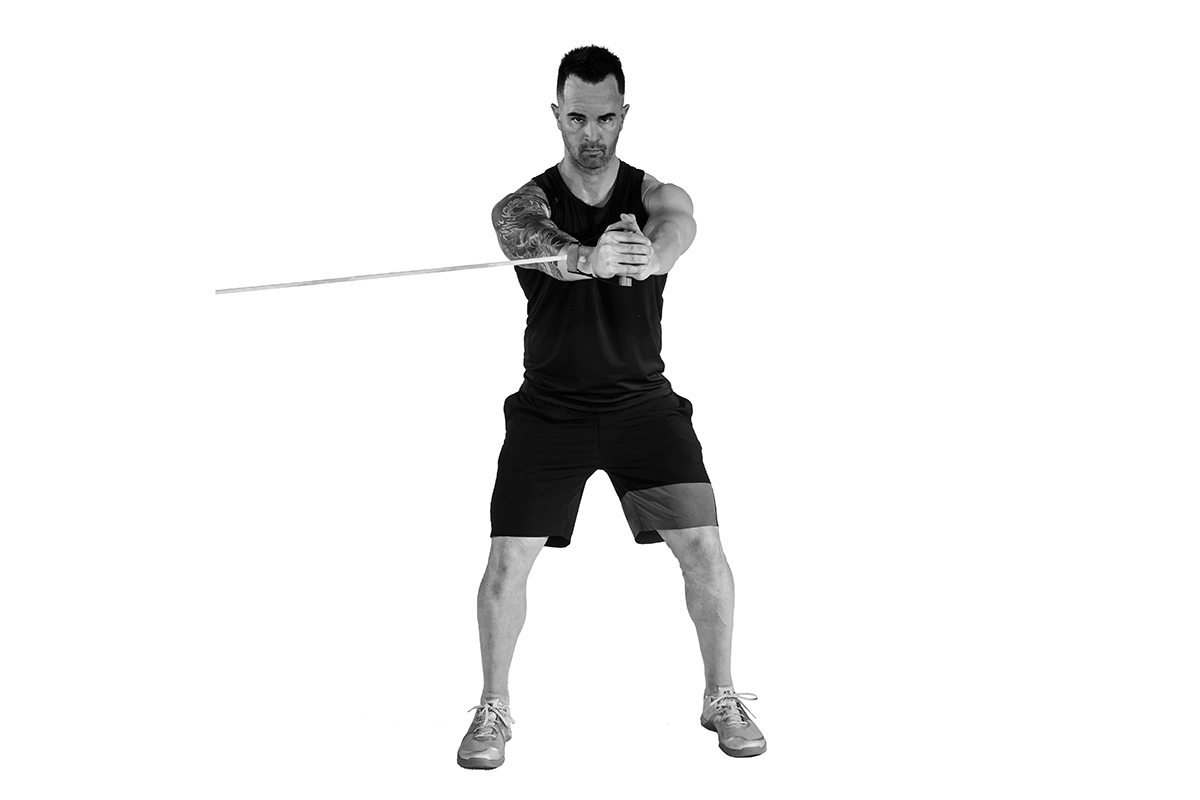
Band core press
- Anchor a resistance band to a secure surface (such as a railing or a bedpost) at about chest level. Grasp the band handle with both hands and step back until the band develops a moderate amount of tension. Stand with your feet hip width apart, squatting down slightly. Hold the band handle against your chest with your fingers interlocked and palms facing each other.
- Tightening your rear end and abdominals, press the band out in front of you until both arms are fully extended.
- Pause for a full second with the arms extended, not allowing the band to rotate your body. Bring the band handle back in to your chest and repeat for the suggested number of reps. Turn around and repeat on the opposite side.
What it does: Strengthens the entire core, with an emphasis on the oblique muscles that rotate your torso.
Form tip: Do not let your hips shift or sway.
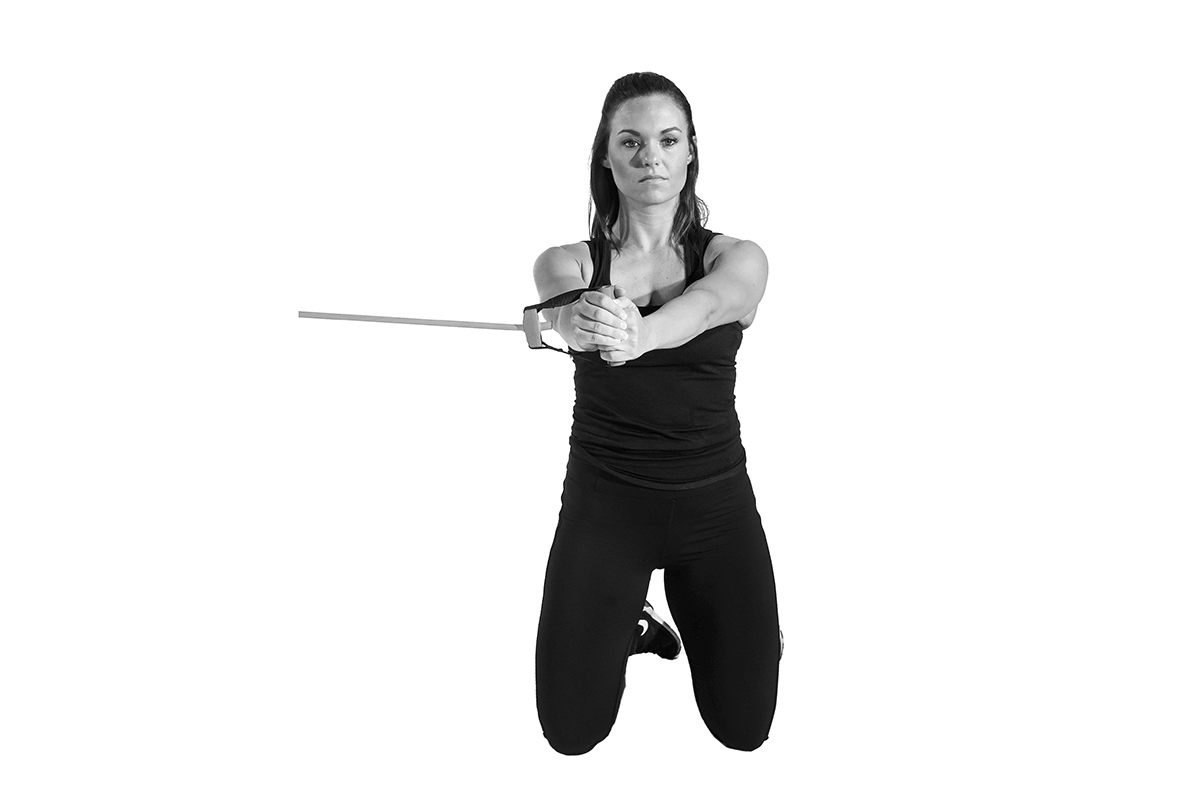
Tall kneeling band core press
- Anchor a resistance band to a secure surface (such as a railing or a bedpost) at about waist level. Grasp the band handle with both hands and step out until the band develops a moderate amount of tension.
- Kneel on both knees with your knees almost touching. Hold the band handle against your chest with your fingers interlocked and palms facing each other.
- Tightening your rear end and abdominals, press the band out in front of you until both arms are fully extended.
- Pause for a full second with the arms extended, not allowing the band to rotate your body. Bring the band handle back in to your chest and repeat for the suggested number of reps. Turn around and repeat on the opposite side.
What it does: Strengthens the entire core, with an emphasis on the oblique muscles that rotate your torso.
Form tip: To really work your core muscles, avoid letting your hips shift or sway. Here are more upper body exercises that don’t require weights.
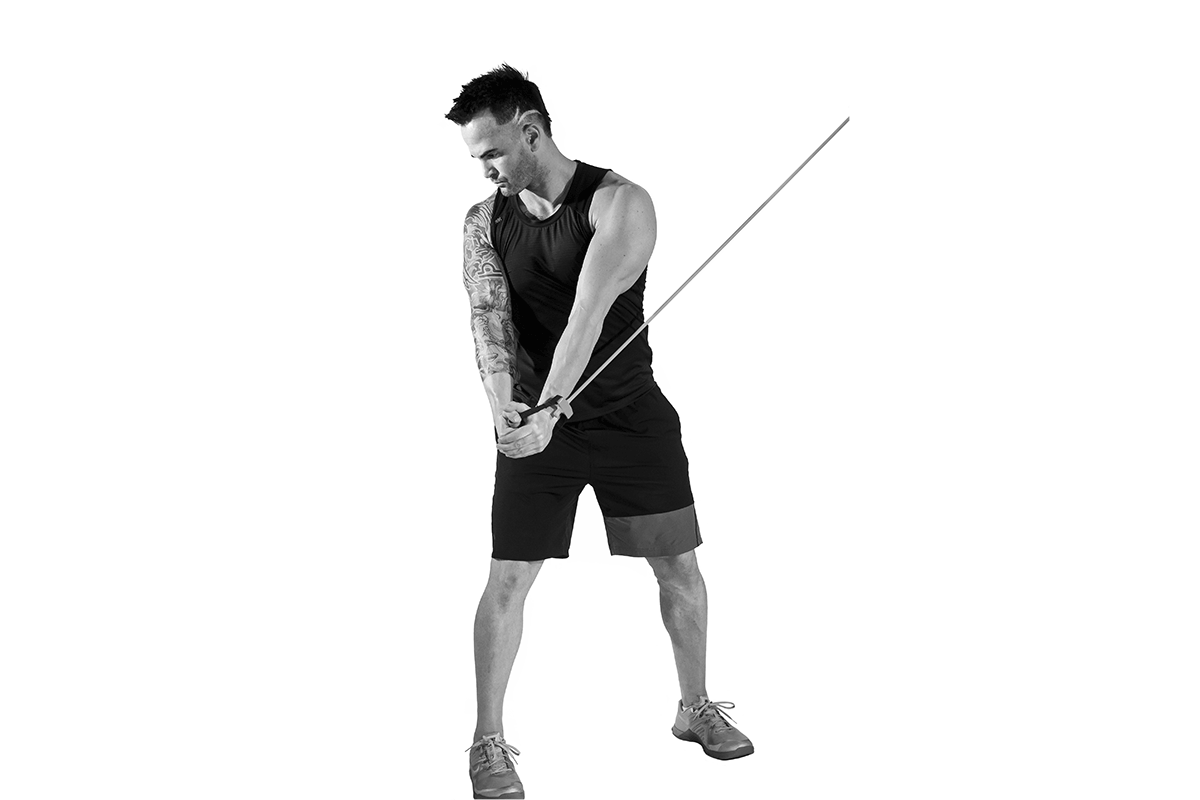
High-to-low band chop
- Anchor a resistance band to a secure surface (such as a railing or a bedpost) above your head. Grasp the band handle with both hands and step out until the band develops a moderate amount of tension. Stand with your feet shoulder width apart.
- Rotate your upper body and arms in and up as if reaching for the band anchor point. Your arms should stay straight.
- Using only the muscles in your core, rotate from the anchor point, through the midline of your body, and down to a point where your hands reach the outside of your right hip.
- Pause for a full second and return to the starting position. Repeat for the suggested number of reps, turn around, and repeat on the other side.
What it does: Strengthens the entire core, with an emphasis on the oblique muscles that rotate your torso.
Form tip: Perform this movement smoothly and slowly, and avoid pulling too hard with your arms; think of them solely as a connector to the band handles.
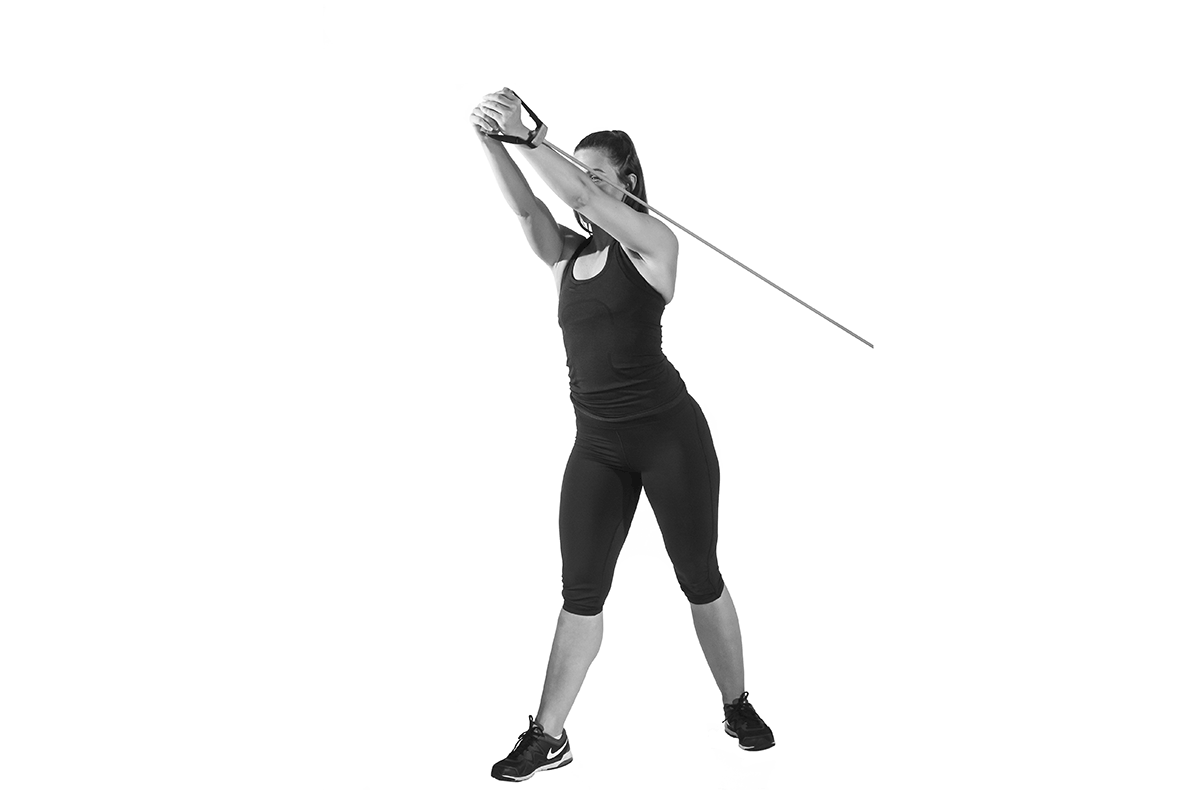
Low-to-high band chop
- Anchor a resistance band to a secure surface (such as a railing or a bedpost) at ground level. Grasp the band handle with both hands and step out until the band develops a moderate amount of tension. Stand with your feet shoulder width apart.
- Rotate your upper body and arms in and down, as if reaching for the band anchor point. Your arms should stay straight.
- Using only the muscles in your core, rotate from the low position, through the midline of your body, and to a point where your hands are up above your left shoulder.
- Pause for a full second and return to the starting position. Repeat for the suggested number of reps, turn around, and repeat on the other side.
What it does: Strengthens the entire core, with an emphasis on the oblique muscles that rotate your torso.
Form tip: Perform this movement smoothly and slowly, and avoid pulling too hard with your arms; think of them solely as a connector to the band handles. Don’t miss these exercises that can transform your body in 60 seconds.

For more workout plans to help you at home or at the gym
Get my book, 60 Second Sweat, to get a rock-hard body one minute at a time.